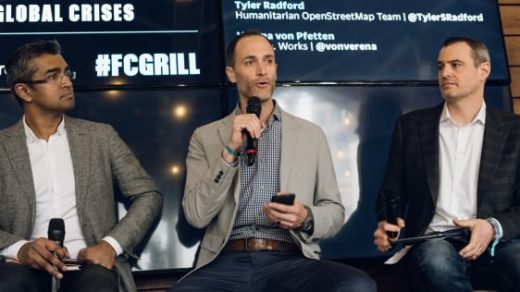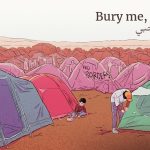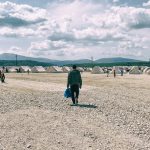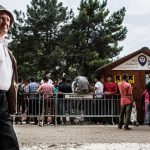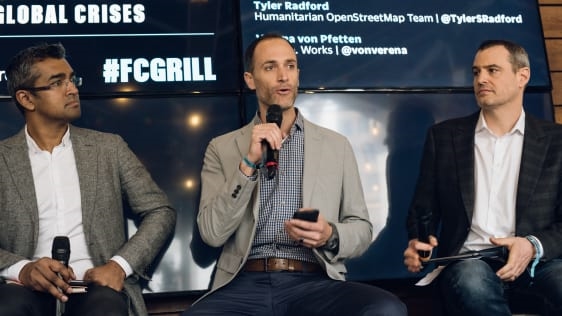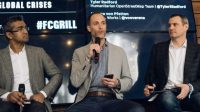How Techies Are Helping Aid Groups Tackle The Global Refugee Crisis
It’s a question we quietly ask ourselves every time we fire up Twitter or read the news: Are things really this bad? For the ongoing worldwide refugee crisis, the answer, says Ravi Gurumurthy, chief innovation officer of the International Rescue Committee, is “Sadly, yes.”
The horrifying stories of Syrian migrants drowning en masse as they attempted to cross treacherous waters in rickety boats have caught major media attention in the past, but the crisis extends way beyond those pointed tragedies.
“At the moment, there are about 65 million people displaced as result of conflict, and typically, they are displaced for a decade,” says Gurumurthy, speaking on a panel at the Fast Company Grill during last weekend’s South By Southwest gathering (the event was a Fast Company custom panel, sponsored by Salesforce.org) . “So, it’s not just weeks and months that we have to think about their needs–we have to think about education, their health, and jobs as well as just protecting them.”
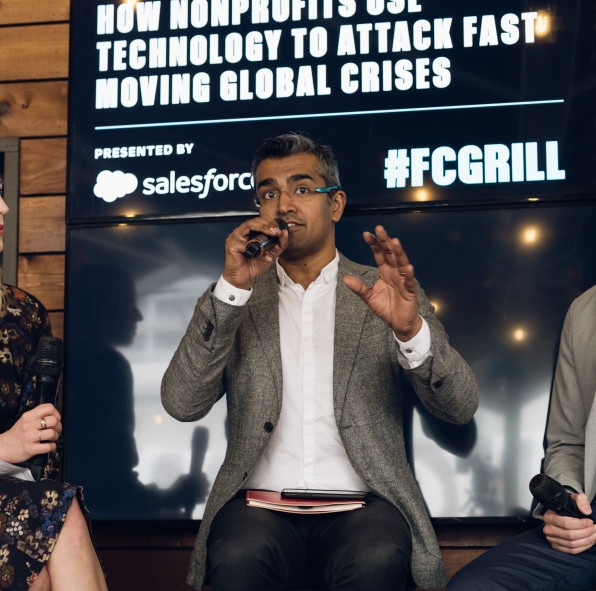
As the global refugee crisis persists, it’s become clear that old humanitarian aid models no longer hold up, forcing nonprofits and NGOs to look to tech to expand and overhaul the way they operate.
Tyler Radford, speaking on the same panel, describes how his organization, Humanitarian OpenStreetMap, is tackling the challenge of identifying populations and areas of greatest need. “So many people in need are simply not counted because they don’t appear on a map,” he says. Yumbe, Uganda, on the border of South Sudan, for instance, looks almost entirely empty on a map, but it’s where many refugees fleeing conflict in Sudan have settled.
The Humanitarian OpenStreetMap team is equipping individual volunteers to form “working groups” that use mobile technology to collect data and update maps. In many cases, the refugees themselves are helping; one study found that 86% of young Syrian refugees have access to one. OpenStreetMap links with mobile-connected refugees to feed data into maps that inform aid organizations how to better target their resources.
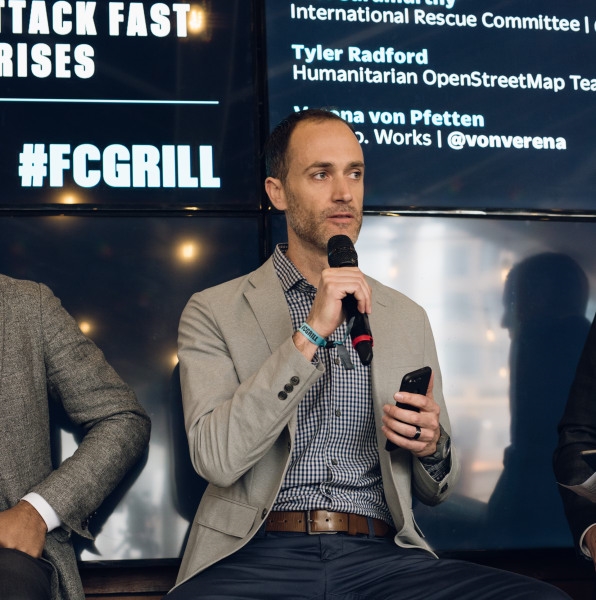
There are still other benefits of connectivity in humanitarian work, says Rob Acker, CEO of Salesforce.org, the nonprofit arm of Salesforce. If each refugee had a smartphone upon which they could carry a blockchain-empowered universal transcript—a digital record containing data on an individual’s health, education, and skills—refugees could utilize this resource to help them access the employment and health resources they need when they arrive in a new place.
Often, educated refugees must start over when they arrive somewhere new. “There are too many stories of someone who, for instance, was doing trauma surgery in Iraq, but has to go back to a 101 class and begin the qualification process all over in a new country,” Acker tells Fast Company. The universal transcript would both democratize and legitimize people’s qualifications.
That type of mobile resource would also feed into a project Gurumurthy is working on with the IRC–a partnership with researchers at Stanford who have developed an algorithm to place refugees in a specific city based on their skill set and the availability of jobs they could do. “We predict that employment rates will go up 40% just by applying this matching technology,” he says. If a refugee were able to access a record of their skills and education on the blockchain, it would streamline the process even further.
The advancements in technology are fundamentally “about empowering the individual” Acker says. He’s hopeful that advancements in connectivity through mobile platforms will create a democratizing effect and allow people to access the resources and connections they need to build their own path out of a crisis, without having to wait for old aid structures to reach them.
“You could almost imagine a world where NGOs give money to people in need and help them to connect up to social networks and resources via mobile, and they’re able to survive and thrive without the traditional model of NGOs shipping goods and services into places,” Gurumurthy says. “That world is closer than we think.”
(37)

